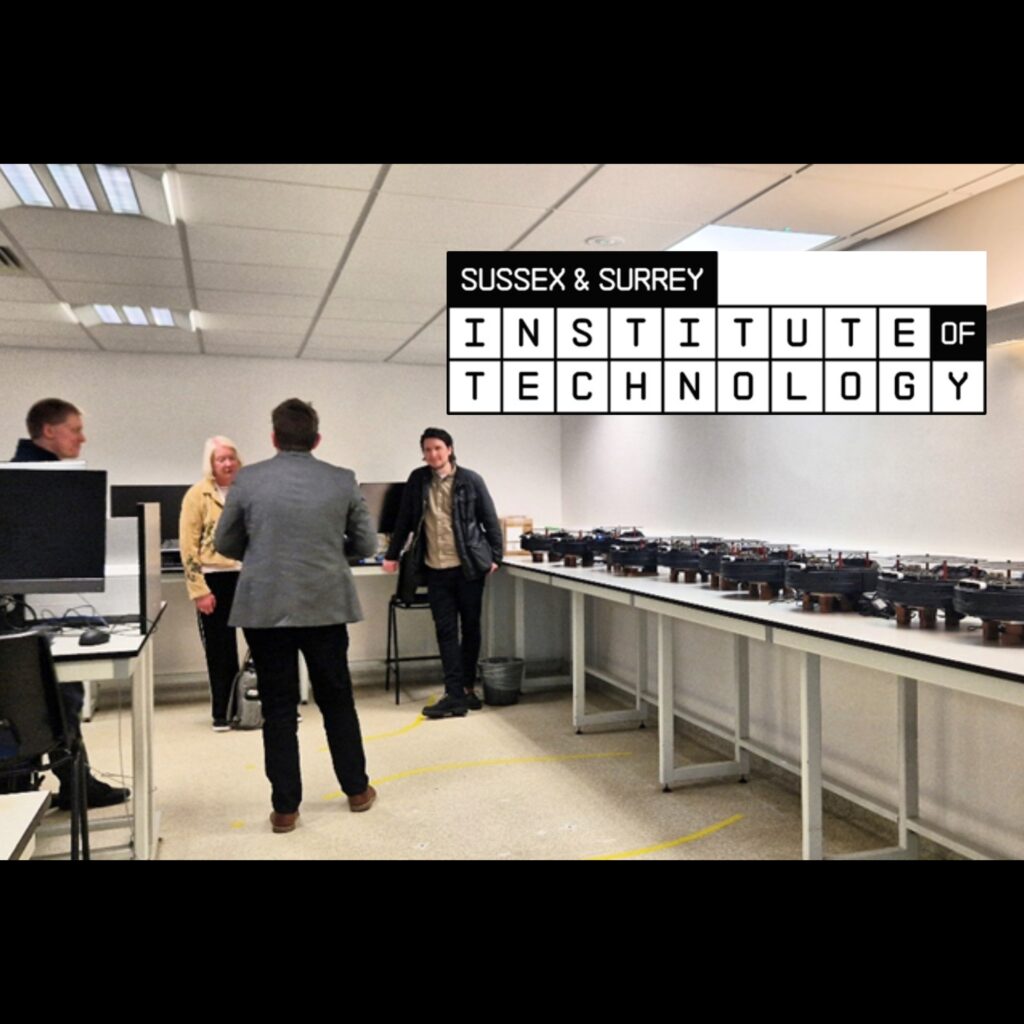Recently two members of the Sussex Surrey Institute of Technology (SSIoT) team – Tim Chester-Williams and Nick Thorp – visited the University of of Sussex to explore their engineering facilities and strengthen collaboration as part of our wider network of IoT partners.
We were hosted by Melanie Dumelow, Apprenticeship Marketing Manager and Mark Puttock-Brown, Associate Professor of Mechanical Engineering, who led us on a fascinating tour of the campus and its innovative learning environments.
Mark Puttock-Brown is a prime example of a passionate university professional. As a knowledgeable and engaging educator, Mark is committed to helping students build strong engineering foundations and practical experience that employers truly value.
The University of Sussex is a proud partner of the SSIoT, and this visit reinforced the strength of that relationship. Our goal is to create seamless pathways for students from HNC, HND and Higher Technical Qualifications (HTQs), through to degree-level education and beyond, with real employer input throughout.
Engineering in Action: Facilities Tour
The university has been involved with many real-world projects throughout the decades, driven by their excellent reputation in mechanical engineering. The aim being to solve a specific issue or drive technology improvements.
One of the standout projects is the Multiple Cavity Rig (MCR) – a research test rig housed in its own dedicated room that recreates the internal environment of a gas turbine engine used in commercial passenger aircraft. Constructed from aerospace grade Titanium with over 100 instrumentation points, it can run at 8,000 RPM at up to 250 oC, producing ‘engine-representative conditions’ (similar conditions to those found in actual gas turbine engines).
The MCR is a world-leading experimental facility used to study air flow and heat transfer in high-pressure compressors. In 2021, its outputs contributed to global studies credited with saving 300 kilotonnes of fuel, 800 kilotonnes of CO2 and $8 million in operating costs.
We also saw a wide range of other high-spec equipment in action, including:
• A high-resolution electric low-pressure particle impactor measuring particle sizes down to 6 nanometres!
• An aero-acoustic pressure-flow test rig for next generation silent ventilation
• A temperature controlled automotive car cabin used in human thermal comfort studies
• Highly instrumented domestic oven test rigs to develop next generation appliances
• Student-designed F1 heat transfer rigs
• A ‘living-lab’ multi-zone temperature monitoring system designed to develop building thermal models for net-zero
Another highlight was visiting Sussex Racing, the university’s student Formula Student racing car team. Every year, students design, build and race their own car, competing against teams from other institutions. The team works out of an advanced workshop that wouldn’t look out of place in a Formula One headquarters – it’s an impressive, hands-on learning space.
We also saw robotics teaching spaces, including Quanser robots programmed by students to follow precise paths marked on the floor – a great example of practical coding and real-time problem solving.
We also visited the Energy Systems Teaching lab, including wind tunnels, fluid mechanics and heat transfer rigs, motor control and renewables – recently receiving over £250k investment in equipment.
Their rapid prototyping workspace features a laser cutter, CNC machines and 3D printers, all available to students for use.
The materials strength labs with over £120k invested to investigate the tensile strength and hardness of engineering materials.
In addition to recently refurbished electronics labs.
Real-World Skills, Real Mentorship
The university runs an Engineering and Design Mentoring Programme, pairing students with academic mentors who support their time management, revision planning, and technical understanding. This wraparound support ensures students are set up for success in their studies and in their careers.
Creating Future Engineers Through Strong Partnerships
At the SSIoT, we’re proud to work with institutions like the University of Sussex to support learners at every stage – from level three all the way up to level seven. Whether you start your journey at Crawley College studying an HNC or HTQ, or later choose to pursue an Engineering degree at university, the route is flexible and focused on building real-world skills and employer readiness. We are working together to provide the best possible learning journey and career opportunities for you.
This partnership benefits employers too, by creating a reliable talent pipeline equipped with proven, job-ready capabilities. Some students even secure job offers while still studying – a true testament to the effectiveness of this hands-on, integrated approach.
Explore engineering courses now and shape your future with the SSIoT.
Follow us on LinkedIn for more blog posts about technology and the SSIoT.
